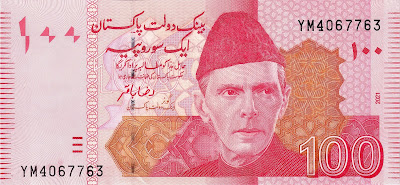Philately, the study and collection of postage stamps, opens a window to a country's history, culture, and art. Hungary, with its rich and diverse history, offers a fascinating array of stamps that reflect its journey from the Austro-Hungarian Empire to a modern European nation. This article delves into the history of Hungarian stamps, the role of Magyar Posta (Hungary's national postal service), the variety of stamp issues, and their value in the collectors' market.
Historical Overview
The history of Hungarian stamps dates back to the mid-19th century. The first stamps used in Hungary were those of the Austrian Empire, as Hungary was part of the Austro-Hungarian Empire. These stamps, issued in 1850, bore the portrait of Emperor Franz Joseph I. However, the need for distinctly Hungarian stamps grew as the national identity strengthened.
In 1867, following the Austro-Hungarian Compromise, Hungary gained more autonomy, and the first Hungarian stamps were issued. These featured the coat of arms of Hungary and were inscribed in Hungarian. Over the years, the designs evolved, reflecting significant historical events and cultural milestones.
Key Historical Milestones
1. 1867-1918: Austro-Hungarian Empire Period
- The first Hungarian stamps were issued in 1867, featuring the Hungarian coat of arms.
- Subsequent issues included portraits of Franz Joseph I and various symbolic designs.
2. 1918-1945: Interwar Period and World War II
- The end of World War I saw the dissolution of the Austro-Hungarian Empire. Hungary issued stamps as an independent nation starting in 1918.
- This period included stamps depicting national heroes, historical events, and significant political changes, including the brief existence of the Hungarian Soviet Republic in 1919.
3. 1945-1989: Socialist Era
- Post-World War II, Hungary became a socialist state under Soviet influence. Stamps from this period often depicted communist themes, industrial achievements, and propaganda.
- Notable issues included stamps celebrating space exploration and international solidarity.
4. 1989-Present: Modern Hungary
- With the fall of communism in 1989, Hungary transitioned to a democratic republic. Modern stamps feature a mix of historical commemorations, cultural icons, and contemporary themes.
- Magyar Posta has embraced technological advancements, issuing stamps with innovative designs and features.
Magyar Posta and Stamp Production
Magyar Posta, the Hungarian postal service, has been the primary issuer of stamps in Hungary. Established in 1867, it has a long tradition of producing high-quality stamps that are appreciated by collectors worldwide. Magyar Posta has consistently focused on artistic excellence and historical accuracy, making Hungarian stamps highly desirable.
Variety of Hungarian Stamps
The diversity of Hungarian stamps is vast, encompassing various themes and designs:
1. Definitive Stamps: These are everyday stamps used for regular mail. They often depict national symbols, such as the Hungarian coat of arms, and are issued in large quantities.
2. Commemorative Stamps: Issued to mark significant events, anniversaries, and notable individuals, these stamps are often more elaborate and printed in limited quantities.
3. Thematic Stamps: These stamps explore specific themes like nature, architecture, art, and sports, catering to niche interests of collectors.
4. **Special Issues**: These include stamps with unique features like holograms, 3D designs, or those printed on special materials.
Collectors' Market Value
The value of Hungarian stamps in the collectors' market varies widely based on rarity, condition, and historical significance. Here are some key factors influencing their value:
1. Rarity: Stamps from the early periods (1867-1918) are particularly valuable, especially those in mint condition. Stamps with printing errors or limited issues also command high prices.
2. Condition: Mint condition stamps, those that have not been used and retain their original gum, are more valuable than used ones. However, used stamps with rare cancellations can also be valuable.
3. Historical Significance: Stamps commemorating significant historical events or figures tend to be more sought after.
4. Special Features: Stamps with unique features or limited-edition releases can fetch high prices.
Notable Hungarian Stamps
- First Hungarian Issue (1867): Featuring the coat of arms, these stamps are highly prized by collectors.
- 1919 Hungarian Soviet Republic Stamps: Issued during a brief communist regime, these stamps are rare and historically significant.
- 1950s Space Exploration Series: Reflecting Hungary's participation in the space race, these stamps are popular among thematic collectors.
- Recent Innovations: Modern issues with innovative designs, such as holographic stamps, have also garnered attention.
Conclusion
The stamps of Hungary, issued by Magyar Posta, offer a captivating glimpse into the nation's history and cultural heritage. From the early issues of the Austro-Hungarian Empire to modern innovative designs, Hungarian stamps continue to be a cherished part of philately. Collectors worldwide appreciate their artistic quality, historical depth, and the stories they tell. Whether you're a seasoned collector or a newcomer to philately, Hungarian stamps provide a rich and rewarding journey through time.

.jpg)
.jpg)
.jpeg)
.jpeg)
.jpeg)
.jpeg)
.jpeg)
.jpeg)
.jpeg)
.jpeg)
.jpg)
.jpg)
.jpg)
.jpg)